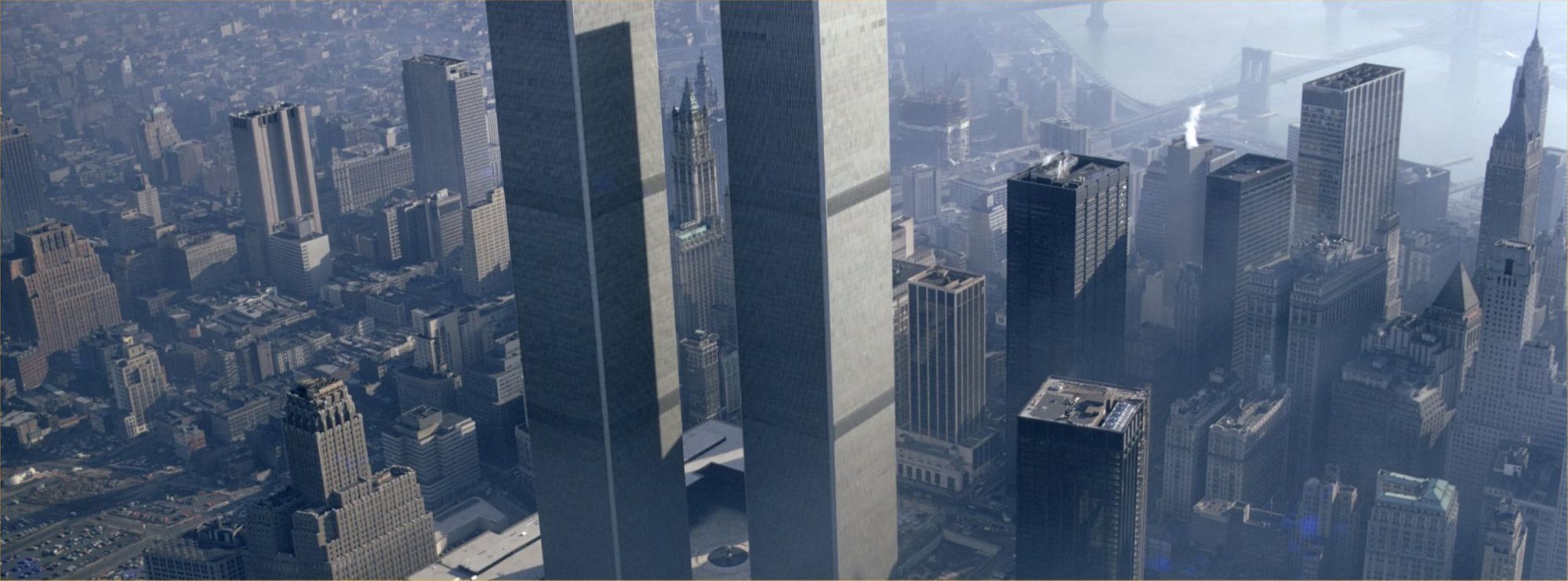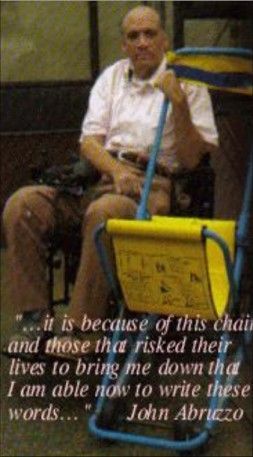Twin Towers Escape

The Difference a Chair Can Make! The story of one man's escape from the World Trade Center on 9/11/2001.

"There were so many ways that we were lucky," says John Abruzzo, of his narrow escape from Tower One of the World Trade Center.
September 11th started as a normal day for John, who worked on the 69th floor as an associate accountant for the Port Authority of New York and New Jersey. When the first plane hit the tower that day John, like others, rushed to the stairwell. However, evacuation for John would prove to be much more difficult than many other World Trade Center occupants. John is a C 5-6 quadriplegic who relies on an electric wheelchair for mobility. That day, many seemingly ordinary people did extraordinary things. ten such people were at John's side. "There was no debate on whether I would be brought down or not by these people. It was more or less a collective decision," says Abruzzo.
With the use of a special evacuation mobility devise designed for the physically disabled, call the EVAC+CHAIR Emergency Wheelchair, John was able to make an escape to safety. "It took us an hour-and-a -half to get down 69 floors." Although it is designed to be guided by one person, three to four people handled the special evacuation chair while heading downstairs, rotating positions as necessary. Several disabled people were successfully evacuated with the Evac+Chair that day. While descending they passed collogues waiting in stairwells as instructed.
John and his group exited the tower and were out of harm’s way ten minutes before its collapse. In the first attack on the World Trade Center in February, 1993, John's evacuation took six hours during which his electric chair was carried from the 69th floor to the 44th floor, where he was then transferred to a stretcher and finally exited the building.
Shortly after the '93 bombing, The Port Authority purchased a number of products and systems to aid in evacuation and safety of World Trade Center occupants, including 125 Evac+Chairs. However the initial need for preparedness wore off soon after the first attack, specialized training was not given and regular evacuation plans were not carried out. Employees were even unsure of the location of the chairs. In an excerpt from the article “Unsafe Refuge – Why did so many wheelchair users die on September 11?” Tina Hansen recalls “The fire safety director (of the Port Authority) investigated and gave them (Evac+Chairs) to employees who were identified with mobility restrictions. Mine was underneath my desk and I had forgotten all about it. Two secretaries remembered and reminded me.” In high-rise disasters, it is thought, a wheelchair user’s only hope is to be carried to safety by firemen. That is why instructions are to wait in “safe areas”, but this assumption and prevailing evacuation procedures are flawed, with potentially fatal consequences. Tina and John both escaped in Evac Chairs with inexperienced helpers because they broke the rules. Most disabled and their buddies did what they were instructed to do – wait to be rescued – and died.
EVAC+CHAIRS SAVE LIVES.

